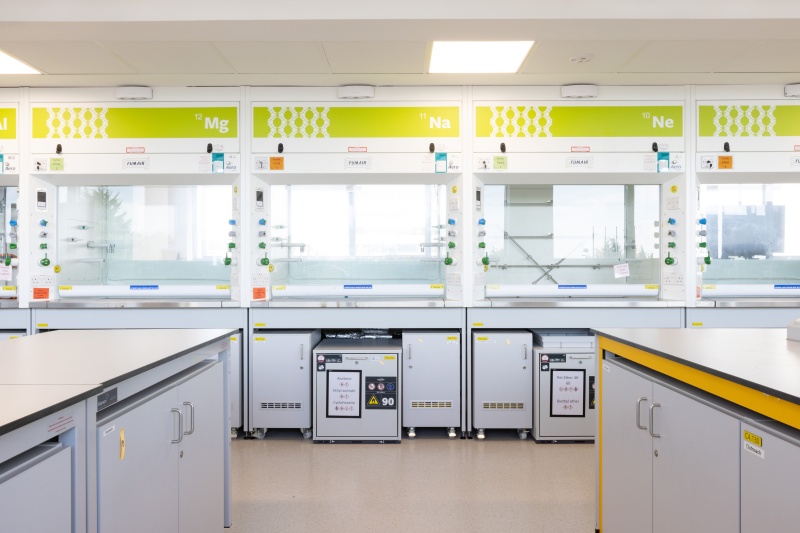National STEM Day: Bridging the Gap Between Industry and Education

Despite its relative size, the United Kingdom stands as a leading hub for STEM (Science, Technology, Engineering, and Mathematics) disciplines. We take pride in our contribution to this narrative, collaborating on a variety of STEM facilities for multiple universities. At the core of each project lies a deep understanding of user needs, resulting in spaces that cater to both present and future requirements.
Architecture intertwines elements from all STEM disciplines. Architects utilise scientific principles, engineering concepts, mathematical calculations, and technological advancements to design and construct buildings that are functional, safe, and visually appealing. As we celebrate national STEM Day, we hear from Cara Loughran, Project Director, who specialises in STEM facilities.
What is the meaning of STEM?
STEM is an acronym for Science, Technology, Engineering, and Mathematics. It refers to educating students in these four disciplines. The requirements of facilities vary depending on the stage of education. We work across the spectrum on highly, specialist research facilities and teaching laboratories all the way to secondary schools, where students first explore their passion for STEM.
How can insights from users help in designing STEM facilities?
Different STEM subjects need different kinds of spaces. Many have their own very specialist, technical requirements. We want to hear from the people who use and teach in those spaces in order to know how they do their work, what they need from the space, and what they hope to achieve. We use our skills and experience in STEM, paired with the user’s unique knowledge of their field, to make the best spaces possible.
You said that different fields have their own specific technical needs. Can you share an example of a unique consideration?
Every project is different, and challenges vary from design to logistics. For example, when establishing new Chemical Engineering laboratories, the scaffold construction had the potential to interfere with the electromagnetic fields of the experiments in an adjacent NMR (Nuclear Magnetic Resonance) Laboratory. We ensured the integrity of experiments by specifying the use of an aluminium scaffold. The non-conducting characteristic of aluminium also ensured the safety of workers, as NMR’s can pose a risk to individuals with certain health conditions when working in the field of influence.
Tell us about one of your project highlights?
I’ve worked on lots of great projects to create STEM facilities. The design of state-of-the-art laboratories for the School of Chemistry at the University of Southampton, would have to be one highlight. The result was a remarkable space that continues to nurture the minds of aspiring students, all housed within an iconic modernist 1960’s Sir Basil Spence design.
Throughout the process, we closely coordinated with stakeholders to ensure the delivery of industry standard facilities. The labs needed to be future-proofed, and able to safely accommodate experiments and teaching for years to come. A university can never stop teaching, so we made it a priority to minimise disruption and carefully plan schedules to support uninterrupted studies.
There were many constraints in the existing building’s layout that influenced our space planning. A large open-plan lab wasn’t suitable due to an immovable internal riser however we overcame this by working closely with AV contractors to ensure that the teaching professors’ experiments could be recorded with a bird’s eye view camera, which was projected to students for clear visibility.
It was a significant project for the university which fully refurbished accommodation for up to 120 students over two levels of a seven-storey building, transforming their Chemistry teaching and research facilities.
Where do you see the STEM industry going?
The potential for research and development in these sectors seems limitless. Universities are creating specialised degrees to cater to the various aspects of these subjects. We are already witnessing a rise in university research facilities, and it seems that research efforts will continue to expand and evolve, ensuring ongoing progress in all four subjects. The emergence of Artificial Intelligence (AI) further amplifies these possibilities.